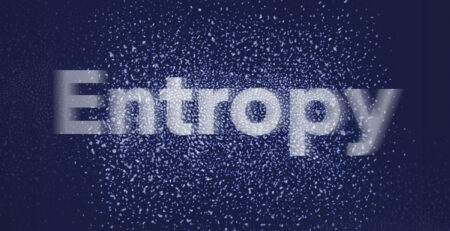VMware is undoubtedly one of the key players in modern IT infrastructure, ever since launching VMware Workstation and Server around the turn of the century. Since then, VMware has been rounding out its offering, extending it to private and public cloud, and adding sophisticated management and automation capabilities.
Now a new wave is building, around a new way of operating IT environments and supporting the business services that rely on them. Moogsoft AIOps is in large part born from the world that VMware has built, a world of impermanent, software-defined and self-modifying infrastructure. In this world of fast-moving components, new approaches to operations are required to keep up with the pace of change.
Moogsoft AIOps is the emerging answer: operations without the dependency on static service models or brittle systems of rules and filters, with human effort and skills focused where they can deliver maximum value, not simply “keep the lights on”.
Here are a few ways that Moogsoft AIOps can complement your VMware infrastructure strategy.
Unified View Across all Infrastructure, In Service Context
Very few IT organisations have the luxury of using a single technology type across the board. Instead, almost everyone has to deal with the legacy of all sorts of historical decisions, mergers and acquisitions, technology islands, and so on and so forth. There is physical compute, network, and storage hardware to manage on top of (or rather, underneath) the virtual kinds, there is probably at least one kind of public cloud, and then there are the applications running on top of all that. An overall view of the availability and performance of the business services that rely on all of these infrastructure types is key – but it must update at the speed of the infrastructure, not require laborious manual data entry of a service definition entry every time something changes. This lack of dependency on static models is key to be able to support modern software-defined architectures. Moogsoft AIOps can bring together existing isolated sources of data into a single unified service-aware view, enabling operators to focus on what’s important and avoid wasting time on what is not.
Software-Defined Everything
SDx is coming; in fact, we could paraphrase William Gibson and say that it’s here already, just not evenly distributed. And that’s the problem: side by side with all the VMware SDN/NFV, there is still all the physical network infrastructure to be managed, and perhaps some other flavours of SDN as well. Again, a combined overview in context is key to getting the most advantage out of investments in SDN/NFV. Moogsoft AIOps is able to provide a unified view across all of these infrastructure types, detecting issues early and enabling IT operations teams to resolve them before they impact service to users.
De-Risking the Virtual Desktop
There are many advantages in virtualising desktops, but the downside is a long chain of potential points of failure, any of which can have outsize impact on end users. The risk is that each link of the VDI chain is often owned by a different team, and individual operators do not always have visibility into the entire chain. When support teams only focus on their own area and don’t talk to each other, there is a greater chance of outages occurring, and when they happen, they will last longer. Moogsoft AIOps can offer earlier detection of developing issues by giving a contextual view of what’s going on across the entire VDI chain, and enable collaboration between those different teams to speed resolution, avoiding disruption to end users.
Service-Oriented Collaboration
VMware admins generally have a pretty good view of their own infrastructure, but may struggle to get visibility into other teams’ areas of responsibility, and to collaborate effectively outside their own team. The risk is that issues go unresolved while tickets get bounced around from team to team (“it’s the network!” “no, it’s the database!”). Instead, Moogsoft AIOps can correlate events across disparate data sources (both technical and business-service-level), helping to determine who needs to be involved in troubleshooting a particular issue. Once the team has been identified, Moogsoft’s ChatOps capabilities facilitate collaboration between different teams, both in real-time and by capturing and surfacing relevant historical knowledge.
Automate All The Things
A key part of reducing incident duration is detecting issues early – but the other part is accelerating resolution of detected issues. Moogsoft AIOps is able to link to VMware’s own automation tools, as well as third-party options, to offer operators a palette of validated triage, diagnostic, and resolving actions, directly within the ChatOps interface, making it easier to adopt these actions. This avoids the situation where different people might have different go-to tools and scripts, making the best available to everyone for use and further improvement. The result is more predictable actions from IT operations, ensuring desired outcomes; namely, rapid restoration of service.
Ops at the Speed of DevOps
VMware makes the Dev part of DevOps very easy. It is trivial to spin up a new VM and deploy code to it, and almost as simple to automate the process so that provisioning the infrastructure is just another step in deployment of code. But what if something goes wrong? Moogsoft AIOps is able take a “release” action as just one more input event, and look for correlations with other events from infrastructure monitoring to help detect problematic releases early. This will allow service owners to be alerted as soon as problematic behaviour is detected. In addition, automated remediation actions can be triggered, such as rolling back the offending change.
Sound interesting? We would love to have a more detailed and specific conversation about how Moogsoft AIOps enables your specific strategy and fits with your technology infrastructure. We’re at both VMWorld Las Vegas and VMWorld Barcelona, so stop by our booth and say hi or Contact Us to learn more.






